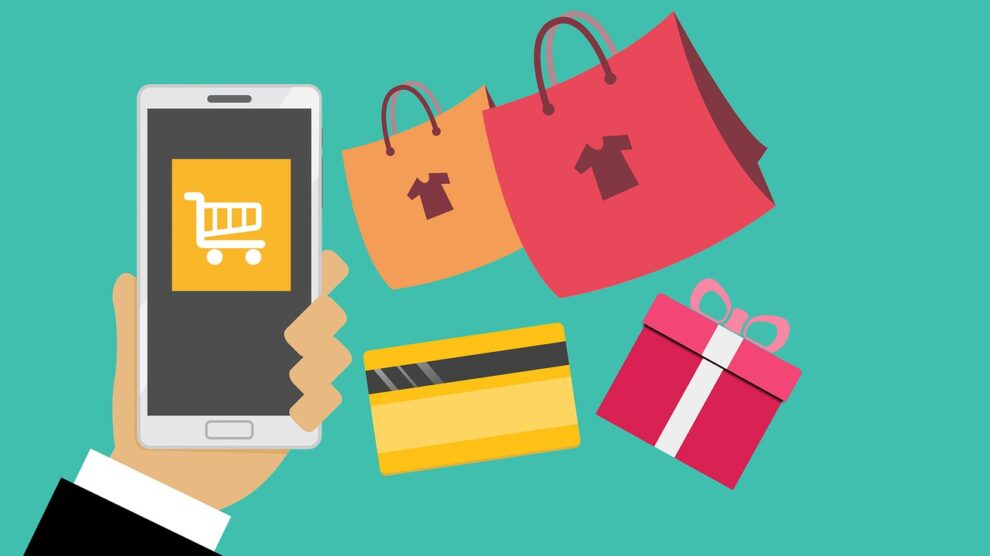The recent pandemic has changed the way people shop- we shifted from brick-and-mortar stores shopping to Ecommerce shopping. Now, Ecommerce shopping has become a new norm. Amazon, Etsy, eBay, and LetGo are the leading Ecommerce marketplaces which are making billions by connecting the sellers and customers. It puts retailer brands in the path of customers looking for products online with huge bucks in hand to spend.
What Is an Online Marketplace?
The online marketplace is essentially a platform that allows multiple sellers across the globe to upload the products/services and sell them to interested customers. For instance, the Amazon marketplace operated by Amazon allows third-party vendors to gain access to worldwide customers and sell the products. All the transactions occur on the platform, and the payment automatically credited to the seller’s account after commission deduction.
Why Is Building a Marketplace App a Lucrative Opportunity?
Wearing the retailer’s lens, investing in building a brand, improving brand awareness, increasing traffic, and earning loyalty mean spending a lot of time, effort, and dollars. It’s eliminated by Ecommerce marketplace development. The sellers enjoy selling the products on the platforms without needing to invest in marketing, optimizing the offerings for search engines, struggling with traffic generation, retaining the customers, and advertising. It’s allowing retailers to hit new milestones with enhanced growth, sales, and ROI.
- Retail e-commerce sales amounted to $4.9 trillion worldwide and expected to grow by 50% over the next four years, reaching about $7.4 trillion by 2025.
- 95% of purchases will be done through Ecommerce marketplaces by 2040.
- The SEO-optimized marketplace, existing traffic, and marketing efforts of the Ecommerce marketplace enable retailers to increase the revenue.
Different Types of Marketplaces Based on Ecommerce Operations
- On-demand marketplace
The platform connects the people looking for the products/services on demand (Within an hour or day) with service providers. For instance, delivering groceries or taxis- when requested by the customers.
- Decentralized marketplace
The marketplaces are based on the P2P model wherein no owner or third party is involved to control the buying and selling process. The sellers have complete power to sell products directly to other buyers with no operator in between.
- Community-driven marketplace
It’s a B2B online marketplace that connects individual retailers with the universe of suppliers. It enables suppliers to list and sell the products directly to retail businesses.
- Managed marketplace
The managed marketplace involves multiple authorities who ensure the proper functioning of the marketplace, says Amazon. The marketplace creates guidelines for sellers, shipping services, IT maintenance services, customer support, and others for the best management.
- SaaS-based marketplace
It’s a type of application marketplace that enables business clients to search, buy, and manage cloud applications from the online storefront. The clients can build their page after paying hefty commissions as fees.
The Success Story of Leading Marketplaces
- Amazon launched in 1995, is the most recognizable brand in the world with 12 million items in inventory and responsible for 50% of US Ecommerce spending in 2021. The annual revenue is continuously growing and expected to reach $356 billion in 2022. What’s more? Amazon is on the way to reaching a $2 trillion market cap as the world’s fourth tech company.
- eBay- the largest Ecommerce marketplace reached merchandising volume of $100 billion in 2020 with 19 million sellers registered. US-based 159 million users let the marketplace generate $10.2 billion as revenue in 2020.
- Etsy- the platform standing ahead in the market with a unique range of products and highly focused on quality has doubled its merchandise sales to $10.3 billion in 2020. With 89 million active users, the platform has generated $1.72 billion as revenue and $349 million as profits.
Which Are the Business Models of Digital Marketplaces?
As an entrepreneur, when a lot of money, time, and efforts are invested in Ecommerce marketplace development, creating revenue strategies to earn dollars is obvious. Here are the monetization models:
- Commission model
This is the most common business model, where a pre-defined percentage of the amount is deducted as commission when the product sold. The commission percent is sometimes the same, and sometimes, varies according to the product. The amount is automatically deducted during every transaction before credited to the vendor’s account.
- Subscription model
This model acts like a membership plan where customers agree to pay a certain amount monthly, quarterly, or annually for using the service or platform. This model ensures a consistent stream of revenue and customers into loyal customers. For instance, the customers subscribe to Netflix video streaming services or dairy products delivery.
- Registration fee
The marketplaces that have already built authority make it essential for vendors to pay the registration fee before authorized to list and sell products on the marketplace. It’s a one-time fee that vendors pay upfront.
- Premium listing
The marketplaces limit the number of products that vendors can list, and they are allowed to list more products after paying a certain amount. Plus, the vendor can get their products listed under the featured product list with premium listing fees, which helps in improving product awareness and boosting sales.
- Advertisement
The companies allowed to place their advertisements on the marketplace at different positions with different charges. The CPI, CPC, CPA, and others are defined for the companies differently.
When Does an Online Marketplace Become a Great Fit? The Addition of Must-Have Features.
- Onboarding
The registration forms should be simple with minimum fields that encourage the users to fill out the form and get registered. Also, keeping the guest login option is good to motivate the user to browse the offerings without much ado. The social login facility enables login with a single click that gears up the users to sign in hassle-free.
- Customer profile
The customers can get the profile created by providing basic information such as name, contact number, email id, address, and bank details. The data helps in engaging the users at a later stage.
- Effortless payment
The convenient and secure payment makes the users buy online. The marketplace should offer the payment options that customers look for the most- COD, credit/debit card, bank transfer, PayPal, and other payment gateways.
- Customer feedback
Customers review the reviews and ratings provided by the existing customers before purchasing the products. Implement the feedback system that enables users to provide their feedback and read the same when they get interested in buying a specific product.
- Social sharing
Harnessing social power is a great way to spread the good word about the product before the large audience base. You can foster existing users to share reviews or post about the product they have used.
- Business analytics
The marketplace can’t outgrow and outdo competition without knowing the performance of products or customers’ views. The analytics help in knowing the platform better and making data-driven decisions. It continuously tracks user sessions, average time spent, user experience, and campaign results to update things accordingly.
- Vendor profile
After authorization, the vendors can create the profile by providing the following details- business name, address, contact number, email id, and others. Besides, the vendor has a customizable dashboard where the sales, orders in progress, and return/exchange viewed centrally. The reviews and ratings display the products and service performance.
- Security
Ensuring robust security is all-important to guarantee no customers’ data gets stolen or lost, else the marketplace’s reputation is put at stake. Make sure the online marketplace is PCI compliant, transactions are end-to-end encrypted, SSL certificates applied, and other security measures are taken. Cross-checking the same with mobile app development services provider is all-important.
The Advanced Features That Give an Extra Edge to the Marketplace
- Push notification
Push notifications are less often ignored. It improves user engagement that resulting in a higher conversion rate and increased ROI.
- Price comparison
The comparison tool allows customers to make the right decision. The marketplace enables product price comparison from different sellers.
- Support multilingual and multi-currency
The marketplaces selling the offerings globally can increase the customer reach locally in different nations by allowing customers to browse products in the local language and checkout in national currency.
- Shipment tracking
Customers have zero tolerance for delays. Turn the order delivery into informed order shipment by allowing the users to track the order at every step of the way from shipment to final delivery.
- Loyalty program
Customer retention is a better deal with new customer acquisition. Reward existing customers with special privileges, freebies, extra discounts, and membership plans that turn them into loyal fans.
- Inventory management
Out-of-stock is the biggest nightmare for the sellers, which is prevented with online inventory management. It informs the sellers when the item is low in stock and needs to replenish for more orders.
- Integrate AI bots
AI bots are intelligent that human customer support in predicting and sensing the customers’ needs by connecting the dots. It helps in providing instant response to the customers and uplifts the chances of cross-sell/up-sell too. Make sure the mobile app development services facilitate the AI bot integration.
How Can a Mobile App Development Company Help You Build an Online Marketplace?
- Conceptualization
The marketplaces are built with an idea. At first, pen down the app idea and its related details such as target audience, competitors, the market gap, and others. The research helps in creating the app strategy that makes the app create a buzz and fill the void.
- Create a blueprint
The detailed document of the marketplace idea won’t give much understanding of the app. The rough sketch of marketplace flow, process, and features make it easy to comprehend the app idea. Also, the wireframe makes it clear what features form the basis of the app and which can be built later.
- Verify app idea feasibility
Every entrepreneur considers their unique app idea as a million-dollar idea, which is not true. It’s essential to delve into the depth of other apps falling under the same niche to know the pros and cons of every app. The analysis of do’s and don’ts helps in knowing which features addition makes the app perform to the notch in the market.
- Check financial stability
The multiple payment methods and payment split have become a norm in the market. You need to check the favorable payment modes in a particular location that syncs with the target audience. Besides, verify if the marketplace brings revenue in the years to come and pays off what’s invested.
- Go MVP way
The worst possibility: Unfortunately, your full-fledged marketplace solution fails to live up to the customers’ expectations after its launch. It’s upsetting! It is better to test the marketplace idea by launching its minimum viable version rather than reinventing the wheel with complete solution development. The MVP helps you know the customers’ feedback, and later, you can expand the app gradually. It’s better to ask the mobile app development company for the same.
- Hire the development team
You cannot shape your marketplace idea into reality unless you team up with a mobile app development company. Get partnered with the right mobile app development service provider that provides consulting services to development and marketing services.
Epilogue
Ecommerce marketplace development is a big endeavor. It’s a dollar-generating machine, but at the same time requires a lot of attention from ongoing development to the date it lives. The success story of the leading marketplaces lets us know the business models to use, functionalities to integrate, and the development process to follow, but your marketplace needs to build credibility, reliability, and trust. The content and team of consultants would give the best advice to jump on the bandwagon of writing another success story. All the best!





